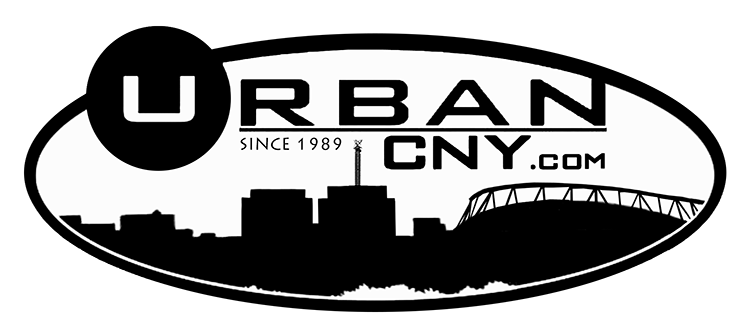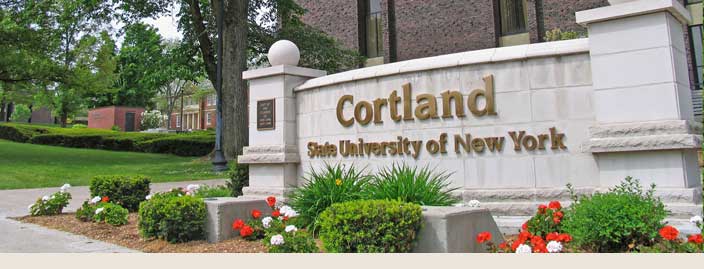SUNY Cortland History Program Calls Teachers to the Wild with Federal Grant Worth Nearly $180,000
CORTLAND, NY (01/26/2015)(readMedia)– SUNY Cortland’s groundbreaking wilderness education program for teachers of the Gilded Age has won another $180,000 federal grant to help two new groups of working educators gain a fresh perspective on the typically urban topic in the Adirondack Mountains. The new grant from the National Endowment for the Humanities (NEH) will allow Kevin Sheets, associate professor of history, and Randi Storch, professor and History Department chair, to take two groups of teachers to the College’s facility at Raquette Lake this summer as part of “Forever Wild: The Adirondacks in the Gilded Age and Progressive Era.” Forever Wild, a one-of-a-kind Landmark NEH program, will be offered to teachers across the country for the second time in three years. NEH’s initial $180,000 grant for the program was awarded to SUNY Cortland in 2012. Camp Huntington at the William H. Parks Family Center for Environmental and Outdoor Education is the only national historic landmark in the State University of New York system. Sheets and Storch again will use the facility to demonstrate how the wilderness shaped history from the 1870s to the early 1920s. In many classrooms, the history lessons from those years are defined by urbanization and industrialization that took place in large cities. “All the attention goes to New York City,” Storch said. “But you can’t have New York City unless you have the resources from the wilderness. “It’s distant, it’s remote, it’s forested, it’s wild space and so therefore it’s not really talked about. But our argument is that the two places are related.” A common obstacle in teaching about the Gilded Age involves the time period’s storylines, dominated by economic issues such as tariffs and cyclical depressions, which can come off as dry. “There’s a real challenge to engage students with those topics,” Storch said. Enter the proposal from the SUNY Cortland pair. It presents the wilderness as a missing dimension of the Gilded Age story and uses Raquette Lake as a crucial lens. The Forever Wild program finds its strength in the outdoors experience and complete immersion in the Adirondacks environment. Participants not only learn from authoritative scholars and visit national historic sites written about in textbooks, but they taste the wilderness lifestyle for a week – sleeping on bunk beds, assuming kitchen duties for a night, and spending many hours outdoors. “What we found the first time through is that place really was critical in fostering relationships,” said Storch, reflecting on the initial run in 2013. “It was transformative for so many of those teachers to be in that place and to really feel like they were part of something big. “Having them all there together – living together, working together, studying together, eating together – really made the critical difference.” That residential component distinguishes Forever Wild from other opportunities in the NEH Landmarks of American History and Culture Workshops for School Teachers Education Program. Although all of the programs are rich and diverse in their content, few can replicate the element of place like SUNY Cortland’s Parks Family Outdoor Center at Raquette Lake. A scholar studying in Chicago, for instance, likely will stay in a hotel. In contrast, the Forever Wild participant will sleep in a cabin that’s part of a Great Camp – a luxurious wilderness retreat – of the Gilded Age. Sheets said he initially wondered if the wilderness aspect would scare people away. Instead, it brought participants closer together. Likewise, several other unique components of the program proved just as meaningful. The nearby Adirondack Museum and its exhibits perfectly illustrated the grant’s themes. Participants also toured Camp Uncas, a private Great Camp that once was owned by J.P. Morgan, and took a seaplane ride for a full view of the Adirondacks landscape. “There’s something about having them up in the air and seeing what six million acres looks like,” Sheets said. “You can describe what it is, but you don’t know what it looks like until you’re up there. It’s vast.” The basic logistical structure of the workshop will stay the same, with teachers arriving on a Sunday and leaving on a Saturday. Before they travel to Raquette Lake together by bus, participants will tour the city of Cortland to gain an urban perspective to contrast with the wilderness. “Cortland is totally typical of the Gilded Age,” Sheets said. “Go to any small city in upstate New York and it’s littered with the evidence of industrialization and the 19th century. “It’s a nice grounding – the perfect laboratory and workshop for us.” At Raquette Lake, participants will learn from noted scholars Rebecca Edwards, a history professor from Vassar College, and Philip Terrie, professor emeritus at Bowling Green University. The most noteworthy programmatic addition to Forever Wild is a comparative international lesson to be offered by Scott Moranda, a SUNY Cortland associate professor of history and an environmental historian. Moranda will discuss the international dimension of the Gilded Age story by comparing forestry practices of the time period in Germany with those in the United States. In 2013, Forever Wild participants came from across the country, from states ranging from Wyoming to Alaska. Some were intrigued by the subject matter, others by the attraction of the wilderness, and several for the parallels that could be drawn in other classroom lessons involving the natural world. A teacher from Florida looking to discuss land-use issues throughout history, for example, might look to the Everglades in the same way Forever Wild incorporates Raquette Lake. Similarly, teachers from the west could use a similar approach to discuss mineral extraction and preservation. “One of my favorite experiences of the grant weeks was listening to teachers sharing their insights and ideas with one another,” Storch said. “Their work created professional networking opportunities that were truly enriching.” Sheets said a major goal for the program is to attract an even more diverse participant group, particularly from places that could use the wilderness as an educational lens. Up to 36 teachers will join each cohort, and educators from












